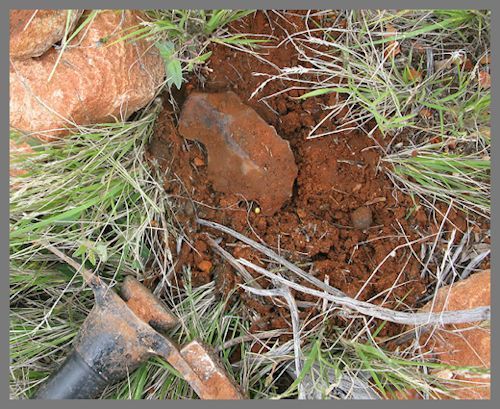Yana
Tenderfoot
Attachments
Last edited by a moderator:
(English translation -Magnet, very heavy, like a meteorite?)
Магнитится, очень тяжелый, похож на метеорит?
Если магнит прилипает к нему или даже слегка магнитный, это хороший способ устранить большинство других камней. Если это так, следующим шагом является отправка его в лабораторию, чтобы они могли определить, является ли это метеоритом.
Добро пожаловать в Tnet!
Welcome to Tnet.
I disagree with the above answer: ?If the magnet sticks to it, or is even slightly magnetic, this is a good way to remove most other stones. If so, the next step is to send it to the lab so they can determine if it is a meteorite.?
There are many ordinary rocks which are attracted to a magnet. Would you describe the strength of the attraction? Weak? Medium? Strong? Very Strong? I think the next step is to try cutting or breaking a small piece so that you can see the inside. It would be good to see pictures. This might help.
However, there is nothing remarkable about the outside of your rock to suggest it is a meteorite. How big is it in centimeters? It looks fairly big. It is important for us to know if your picture shows the rock where it was found, or if it has been moved. If it is as big as it looks in your picture, then a meteorite wouldn?t just be sitting on top of the ground like that. It would have disturbed soft ground and made a fairly large hole. Or it would have broken if it hit hard or stony ground.
Добро пожаловать в Tnet.
Я не согласен с приведенным выше ответом: ?Если магнит прилипает к нему или даже слегка намагничен, это хороший способ удалить большинство других камней. Если да, то следующим шагом будет отправить его в лабораторию, чтобы они могли определить, метеорит ли это ?.
Есть много обычных камней, притягиваемых магнитом. Не могли бы вы описать силу влечения? Слабый? Середина? Сильный? Очень сильный? Я думаю, что следующим шагом будет попытаться разрезать или сломать небольшой кусок, чтобы вы могли видеть его изнутри. Хорошо бы посмотреть картинки. Это может помочь.
Однако нет ничего примечательного снаружи вашего камня, чтобы предположить, что это метеорит. Насколько он велик в сантиметрах? Он выглядит довольно большим. Для нас важно знать, изображен ли на вашем снимке камень, на котором он был найден, или его переместили. Если он такой большой, как выглядит на вашем снимке, то метеорит не мог бы просто так сидеть на земле. Это нарушило бы мягкий грунт и проделало бы довольно большую яму. Или он сломался бы, если бы ударился о твердую или каменистую землю.





I disagree with the above answer: “If the magnet sticks to it, or is even slightly magnetic, this is a good way to remove most other stones. If so, the next step is to send it to the lab so they can determine if it is a meteorite.”
There are many ordinary rocks which are attracted to a magnet. Would you describe the strength of the attraction? Weak? Medium? Strong? Very Strong? I think the next step is to try cutting or breaking a small piece so that you can see the inside. It would be good to see pictures. This might help.
All of the professionals suggest doing the magnet test first. If it is magnetic, the next step is to send it to a lab. You are correct that other rocks might be magnetic, but nearly all meteorites contain iron, which is why the magnet test is a good first step.
Agree with the first step, but not the second. If every magnetic rock justified lab testing to see if it was a meteorite, then labs wouldn't have much time for any other work. Recommended second step is to check whether the internal appearance and other physical features are promising enough to justify laboratory testing.
What else can you do at home? If you cut a piece, there will be clarity? Or use it further as a decor?
Welcome to Tnet.
I disagree with the above answer: ?If the magnet sticks to it, or is even slightly magnetic, this is a good way to remove most other stones. If so, the next step is to send it to the lab so they can determine if it is a meteorite.?
